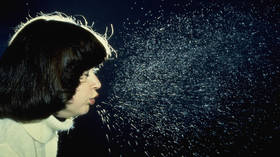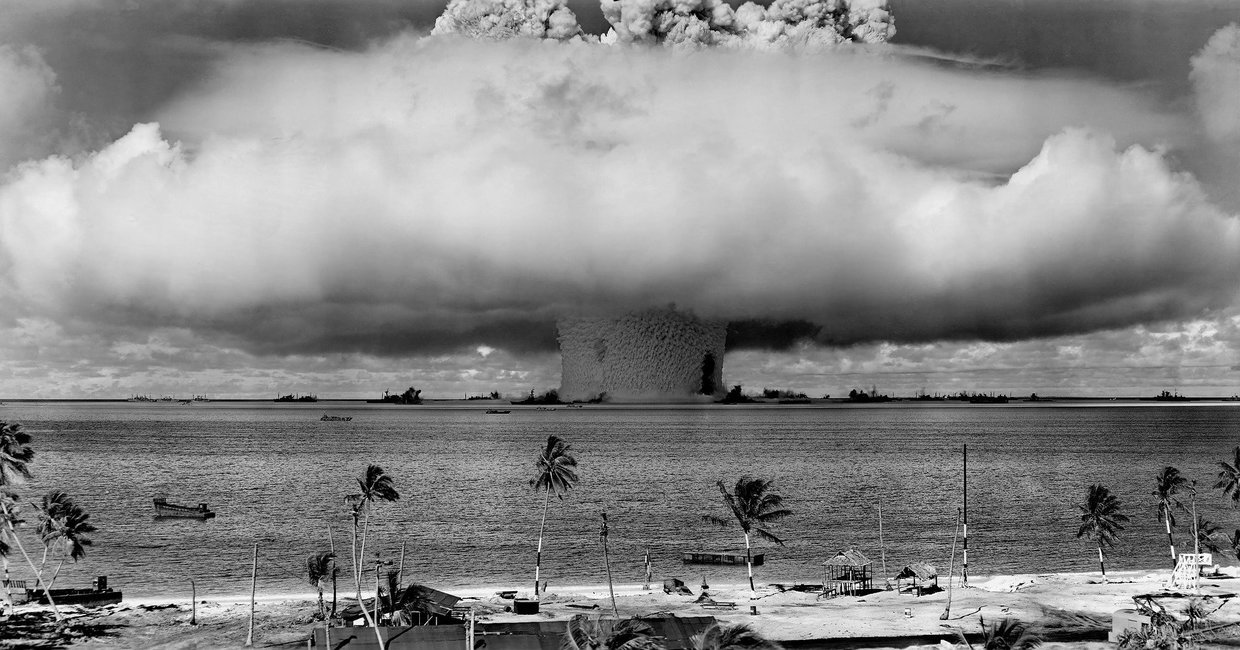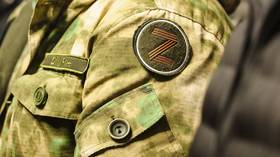‘Mini atomic bombs’: Sneezes travel much farther than we thought and droplets remain suspended for longer

Scientists investigating the threat posed by sneezes have made an alarming discovery – nose blasts can mimic the behavior of mushroom clouds that form after a nuclear blast.
Researchers from Loughborough University in the UK modeled the fluid dynamics of expiratory clouds ejected during coughing and sneezing.
They found that the ever-evolving clouds of mucus mist, spittle spray, and assorted discharge contained in sneezes match a phenomenon known as buoyant vortex rings – which would be the envy of the most practiced smoke-ring blower.
“In the majority of our analyses, the predictions made by our model suggest that the largest droplets consistently exceed the horizontal ranges of two metres [6.5ft] from the source before settling to the ground,” explains mathematician Dr Emiliano Renzi.

Curiously, this turbulent vortex ring, wherein the fluid spins around an imaginary axis while forming a closed loop, is also visible in the mushroom clouds from nuclear explosions.
This phenomenon, coupled with a high-speed viral load ejected from a human nose or mouth therefore acts like a miniaturized nasal nuke of sorts, according to the researchers.
“In some cases, the droplets are propelled in excess of 3.5 meters [11.5ft] by the buoyant vortex, which acts like a mini atomic bomb,” Renzi says.
According to the model, smaller droplets can reach a height of four meters (13ft) in just a few seconds, courtesy of this mini-vortex effect – the sweet spot for reaching ventilation systems in many buildings. Not ideal in a global pandemic.

More worryingly, the smallest droplets of these mini snot rockets can reach comparatively stratospheric heights of six meters (20ft) and remain suspended in the air for prolonged periods of time, increasing the potential risk of spreading infection even further.
“For diseases capable of transmission via aerosol inhalation, these results begin to show the extent to which droplets may travel in relatively short timescales,” the authors write.
The researchers found that tilting your head downwards and not back – some people just want to watch the world burn – would greatly reduce the airborne fallout from nose farts.
Also on rt.com What does a 'superspreader' look like? Scientists identify physical features that could boost Covid-19 transmissionThe scientists acknowledge that they made a number of mathematical assumptions in their model, and that a number of unknowns remain about both the specific mechanics of human sneezes as well as their capacity to convey a viral load across distances.
That said, it appears the standard-issue social distancing guidance of maintaining a two-meter (six-foot) distance between humans may not be enough.
“We recommend behavioural and cultural changes in populations to direct coughs toward the ground, in addition to wearing face coverings, which could help mitigate the risk of short-range direct transmission of respiratory viruses,” the boffins say.
Think your friends would be interested? Share this story!













